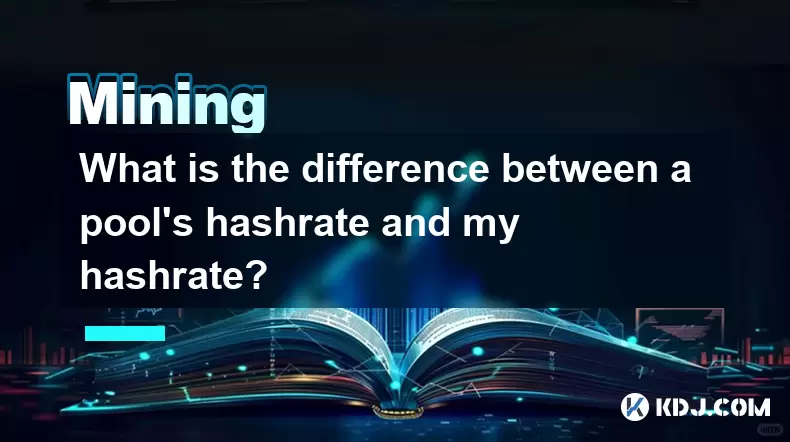-
 Bitcoin
Bitcoin $118,209.3536
1.16% -
 Ethereum
Ethereum $3,151.7546
5.98% -
 XRP
XRP $2.9277
2.35% -
 Tether USDt
Tether USDt $1.0000
0.00% -
 BNB
BNB $689.7099
1.26% -
 Solana
Solana $163.4270
1.91% -
 USDC
USDC $1.0000
0.02% -
 Dogecoin
Dogecoin $0.1983
3.74% -
 TRON
TRON $0.3008
0.51% -
 Cardano
Cardano $0.7435
2.86% -
 Hyperliquid
Hyperliquid $47.6547
-0.48% -
 Stellar
Stellar $0.4625
2.79% -
 Sui
Sui $3.9921
2.71% -
 Chainlink
Chainlink $16.0608
4.23% -
 Hedera
Hedera $0.2348
1.56% -
 Bitcoin Cash
Bitcoin Cash $496.6985
1.25% -
 Avalanche
Avalanche $21.9038
5.41% -
 UNUS SED LEO
UNUS SED LEO $8.8356
-1.88% -
 Shiba Inu
Shiba Inu $0.0...01364
5.31% -
 Toncoin
Toncoin $3.1102
4.35% -
 Litecoin
Litecoin $95.9756
3.59% -
 Polkadot
Polkadot $4.0925
5.78% -
 Monero
Monero $333.7622
-1.44% -
 Uniswap
Uniswap $9.1968
2.25% -
 Bitget Token
Bitget Token $4.6378
6.23% -
 Pepe
Pepe $0.0...01282
6.77% -
 Dai
Dai $1.0002
0.03% -
 Ethena USDe
Ethena USDe $1.0005
0.00% -
 Aave
Aave $329.9143
4.49% -
 Bittensor
Bittensor $441.4995
6.89%
What is the difference between a pool's hashrate and my hashrate?
A higher pool hashrate increases block discovery chances, but individual earnings depend on your personal hashrate and the pool's reward distribution model.
Jul 16, 2025 at 11:42 am

Understanding the Concept of Hashrate
In the world of cryptocurrency mining, hashrate is a fundamental metric that determines the computational power used to process transactions and secure blockchain networks. The hashrate reflects how many calculations a mining device or network can perform per second. When discussing mining pools and individual miners, two types of hashrates often come into play: the pool's hashrate and your personal hashrate.
The pool's hashrate refers to the total combined computational power contributed by all miners within a specific mining pool. This value represents the overall strength of the pool in solving cryptographic puzzles and securing blocks on the blockchain.
Your hashrate, on the other hand, represents the performance of your own mining hardware — whether it’s a single GPU, ASIC, or a small mining rig. It shows how much work you are contributing to the pool and directly affects your share of the mining rewards.
How Pool Hashrate Is Measured
Mining pools aggregate the processing power of numerous miners to increase the chances of successfully mining a block. Since individual miners often lack sufficient hashrate to mine a block alone, joining a pool allows them to combine resources and receive proportional rewards based on their contribution.
- Pool hashrate is calculated as the sum of all connected miners' reported hashrates.
- Mining pools typically display this information on their dashboard or statistics page.
- Some pools may show average hashrate over time instead of real-time values to smooth out fluctuations.
This measurement helps miners evaluate the competitiveness of a pool. A higher pool hashrate increases the likelihood of finding blocks more frequently, though it doesn’t guarantee higher earnings for individual participants due to reward distribution mechanisms.
How Individual Hashrate Is Determined
Each miner’s personal hashrate depends on the performance of their mining hardware. Factors such as the type of equipment (ASIC vs. GPU), clock speed, cooling efficiency, and software optimization all influence this value.
- Your hashrate is measured locally by your mining software, which reports the number of hashes computed per second.
- It is usually displayed in units like MH/s (megahashes per second), GH/s (gigahashes), or TH/s (terahashes).
- Miners can monitor this data through mining software interfaces like CGMiner, BFGMiner, or NiceHash.
When submitting work to a mining pool, your hashrate is also verified by the pool server to ensure accuracy and prevent spoofing. Discrepancies between local and reported hashrates may occur due to network latency or hardware instability.
Differences in Reporting and Accuracy
There can be variations between the hashrate displayed on your mining software and what is shown on the pool’s dashboard. These discrepancies arise from several technical factors:
- Network latency can cause delays in submitting shares, making your effective hashrate appear lower.
- Hardware overheating or throttling may reduce actual performance compared to benchmarked speeds.
- Pool-side adjustments may apply smoothing algorithms to stabilize reported hashrate values.
Additionally, some mining pools use “estimated” hashrate metrics based on accepted shares rather than raw computing power. Understanding these differences helps miners better interpret their performance and optimize their setups accordingly.
Impact on Mining Rewards and Profitability
While the pool’s hashrate influences how often the group finds blocks, your individual hashrate determines your share of those rewards. Most pools use a proportional or pay-per-share model to distribute earnings.
- In proportional systems, rewards are divided based on the number of valid shares each miner submits during a round.
- Under pay-per-share models, miners are paid immediately for each valid share, regardless of whether a block is found.
A higher pool hashrate leads to more frequent block discoveries, but individual returns depend heavily on your hashrate relative to others in the pool. If your hashrate is low, even a strong pool might not yield substantial profits.
How to Monitor and Improve Your Hashrate
Monitoring both your hashrate and the pool’s hashrate is crucial for optimizing mining efficiency. Here’s how to do it effectively:
- Use reliable mining software that provides accurate hashrate readings.
- Check pool statistics pages regularly to track changes in total hashrate.
- Ensure your internet connection is stable to avoid submission timeouts.
- Optimize mining settings such as intensity, thread concurrency, and GPU voltage/frequency.
- Keep hardware clean and well-cooled to prevent thermal throttling.
By fine-tuning your setup and selecting an appropriate pool, you can maximize your effective hashrate and improve profitability without necessarily upgrading your hardware.
Frequently Asked Questions
Q: Why does my hashrate fluctuate even if I don't change anything?
A: Fluctuations can result from temperature changes, driver updates, or mining software instability. Power supply issues or background processes consuming system resources can also impact performance.
Q: Can I trust the hashrate numbers shown by the mining pool?
A: Mining pools generally provide accurate representations of hashrate, though they may apply smoothing or estimation techniques. Cross-check with your local mining software to verify consistency.
Q: Does a higher pool hashrate always mean better earnings?
A: Not necessarily. While a larger pool finds blocks more frequently, individual rewards are diluted among more participants. Smaller pools may offer less frequent but potentially higher payouts per block.
Q: How does overclocking affect my hashrate?
A: Overclocking can boost hashrate temporarily, but it also increases power consumption and heat output. Proper cooling and voltage tuning are essential to maintain stability and longevity.
Disclaimer:info@kdj.com
The information provided is not trading advice. kdj.com does not assume any responsibility for any investments made based on the information provided in this article. Cryptocurrencies are highly volatile and it is highly recommended that you invest with caution after thorough research!
If you believe that the content used on this website infringes your copyright, please contact us immediately (info@kdj.com) and we will delete it promptly.
- Eclipse Airdrop and Token Supply: Navigating the Crypto Landscape
- 2025-07-16 18:50:13
- Solana Price, Zebec Network, and Remittix: Decoding the Crypto Signals
- 2025-07-16 18:30:13
- Crypto Picks & Altcoin Breakout: August's Hottest Trends
- 2025-07-16 18:30:13
- XLM Stellar Analyst Prediction: Is a $10 Target on the Horizon?
- 2025-07-16 19:10:12
- Dubai, Ripple, and Tokenization: A New Era for Real Estate
- 2025-07-16 18:50:13
- Unilabs Finance (UNIL): Primed for a Massive 2025 Launch?
- 2025-07-16 19:15:12
Related knowledge

How are crypto mining profits taxed?
Jul 14,2025 at 12:28am
Understanding Cryptocurrency Mining and TaxationCryptocurrency mining involves validating transactions on a blockchain network and earning rewards in ...

How to keep a mining rig cool
Jul 12,2025 at 01:42pm
Understanding the Importance of Cooling in Mining RigsCryptocurrency mining is an intensive process that places heavy demand on hardware components, p...

How to mine crypto on a gaming PC
Jul 16,2025 at 12:00pm
What is Crypto Mining on a Gaming PC?Crypto mining involves using your computer's processing power to validate transactions on a blockchain network. A...

How to set up a crypto miner
Jul 16,2025 at 09:14am
Understanding Ethereum Gas Fees: What Are They and How Do They Work?Ethereum gas fees are a fundamental aspect of the network, representing the cost r...

Can you mine crypto on a laptop?
Jul 16,2025 at 02:21am
Is It Feasible to Mine Cryptocurrency on a Laptop?Mining cryptocurrency on a laptop is technically possible, but feasibility depends heavily on the ha...

Is crypto mining worth it?
Jul 16,2025 at 01:21am
Understanding the Basics of Crypto MiningCrypto mining refers to the process of validating transactions on a blockchain network by solving complex mat...

How are crypto mining profits taxed?
Jul 14,2025 at 12:28am
Understanding Cryptocurrency Mining and TaxationCryptocurrency mining involves validating transactions on a blockchain network and earning rewards in ...

How to keep a mining rig cool
Jul 12,2025 at 01:42pm
Understanding the Importance of Cooling in Mining RigsCryptocurrency mining is an intensive process that places heavy demand on hardware components, p...

How to mine crypto on a gaming PC
Jul 16,2025 at 12:00pm
What is Crypto Mining on a Gaming PC?Crypto mining involves using your computer's processing power to validate transactions on a blockchain network. A...

How to set up a crypto miner
Jul 16,2025 at 09:14am
Understanding Ethereum Gas Fees: What Are They and How Do They Work?Ethereum gas fees are a fundamental aspect of the network, representing the cost r...

Can you mine crypto on a laptop?
Jul 16,2025 at 02:21am
Is It Feasible to Mine Cryptocurrency on a Laptop?Mining cryptocurrency on a laptop is technically possible, but feasibility depends heavily on the ha...

Is crypto mining worth it?
Jul 16,2025 at 01:21am
Understanding the Basics of Crypto MiningCrypto mining refers to the process of validating transactions on a blockchain network by solving complex mat...
See all articles

























































































